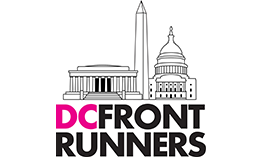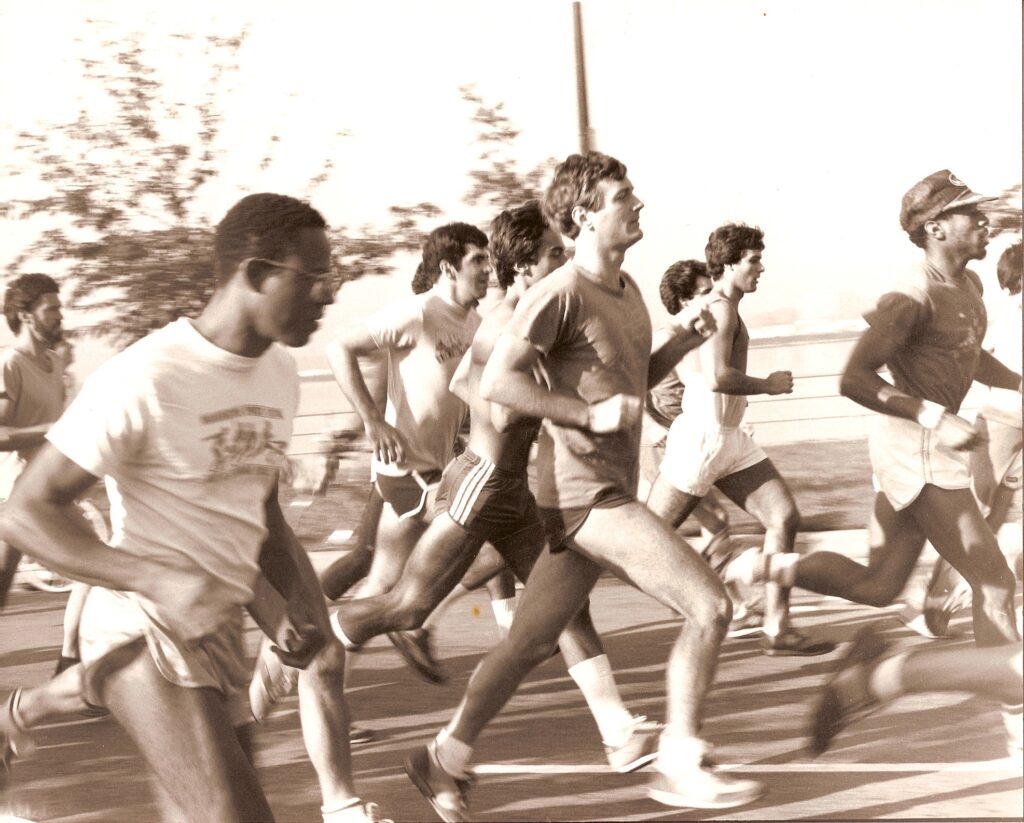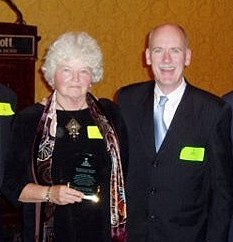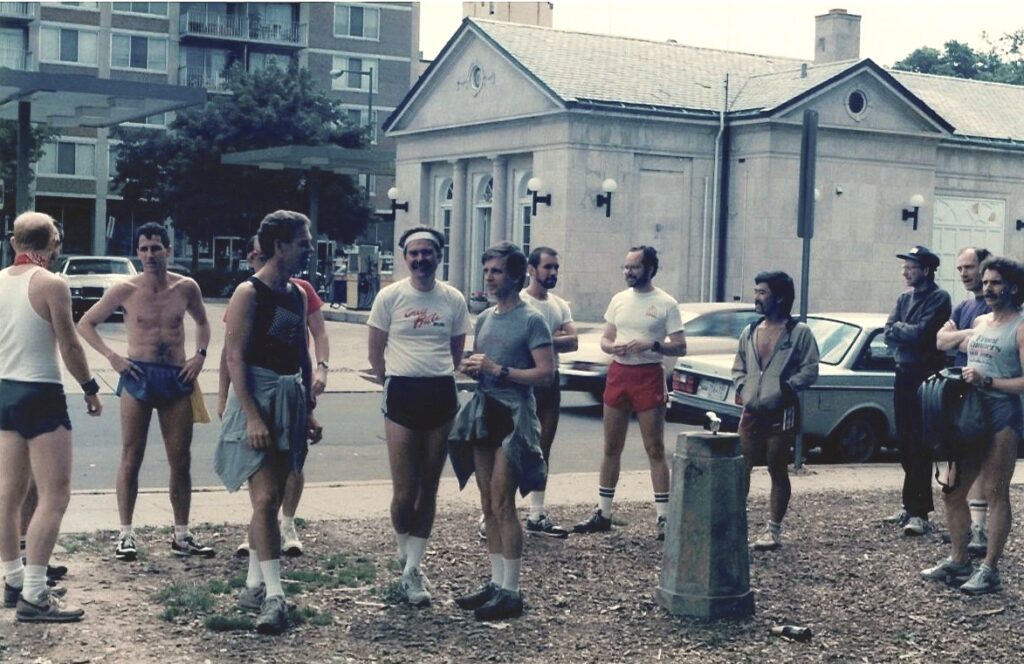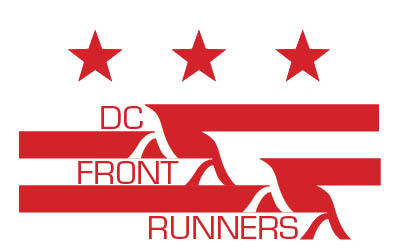35th Anniversary
35 Years and Still Running Strong
by Brian Beary, December 2016
The big things or the small?
We have survived and thrived
as a result both of
our openness to evolve
and our appreciation
of what we have gone through.
In devising, with Marcel Acosta, a timeline for our 35th anniversary, I grappled with a conceptual conundrum. Do we fill it with milestones where we wove ourselves into the gay community’s historical tapestry? Or do we favor cherished memories of everyday activities that collectively comprise our identity? I gradually came to the conclusion that this was not an either/or, that both are worth memorializing.
Jim Chandler, club coordinator from 2005-07, says: “What makes us so special is not the list of significant events that has happened over the past 35 years but the everyday things and the ways we have evolved into this amazing group. It is how we’ve become a family, a safe space, where we find commonality and community.”
Events like our monthly happy hour. Longstanding member Ken Buja explains his key role in launching this club favorite in the early 2000s: “I wanted to get out to a happy hour and know some people at the bar. First, I sent out an invitation somewhat irregularly to a small group of friends. After a while, the happy hours started to be announced at Tuesday evening runs. Eventually, they became an official DC Front Runners event.”
At times, our social gatherings have taken on historical significance. Such as when Patricia Nell Warren, author of the groundbreaking 1974 gay novel, The Front Runner, from which the club takes its name, spoke at a club dinner. Jerry Langan, who co-organized that event with Elliott Blake, says: “We invited Patricia to speak at our Spring Fling dinner in 2004. She was most willing and eager to come to DC for that reason. What I most remember was the comments of so many members about how much the novel had influenced them over the years.”
That dinner, like so many other special moments, was captured in our newsletter, an indispensable asset that has gone through multiple metamorphoses over the years as communications technologies have evolved. Warren Snaider, who has run with the club since 1984, frequently contributed to, and helped to edit and snail-mail out the early print newsletters. Warren notes how Ernie Worden, coordinator from 2000-01, began the transition from print to digital newsletters, a transition that took about a decade.
Skimming through grainy old newsletters, I am struck more by a theme of constancy than change. Discussions on t-shirt designs, holiday parties, race results, governance quibbles, seasonal changes to running routes — it’s all there. One difference between now and yesteryear was that exchange visits with sister Front Runner groups from other cities were more frequent in earlier years.
A fun fact I stumbled upon was how the place we convene, the Taras Shevchenko Monument, came about not as a purposeful decision, but rather was an incidental consequence of having to avoid construction works at the southwest corner of 23rd and P Street, our original departure point. Taneen Carvell, coordinator from 2001-03, around the time we made that switchover, says: “At each run gathering, I stood on a water fountain to try to stand taller than all the boys. My hope was to bring in more women to the group. At the time living in the city still proved a bit off-putting for many women.”
Club membership has always been male-dominated but we have also consistently had a strong band of prominent female members like Taneen. These include Blake Rushin, who organized several beginner coaching programs, Grace Thompson, our current Women’s Outreach Coordinator and liaison officer to Team DC, the umbrella federation for gay sports groups in the DC area, and Maryann Krayer, our first female coordinator (1992-94).
Another revelation was how Thursday evening runs became a fixed calendar item only fifteen years after the club was founded. J Ford Huffman, coordinator 1994-96, notes: “We established the Thursday night run at the request of a member. The runner who came up with the idea then proceeded never to show up for it.”
A designer and author, J Ford has been a driving force in developing the club’s image. In early years, the dominant images in his designs for t-shirts, newsletters banners and the like were the lambda, the Greek letter that is a gay rights symbol, and the distinctive red stars of the DC flag. “The club’s current logotype was introduced during Jim Chandler’s tenure,” J Ford says. “The all-caps, two-line, black-and-magenta: DC FRONT RUNNERS was combined with the illustrative element showing the Capitol dome, the Washington Monument and the Lincoln Memorial.”
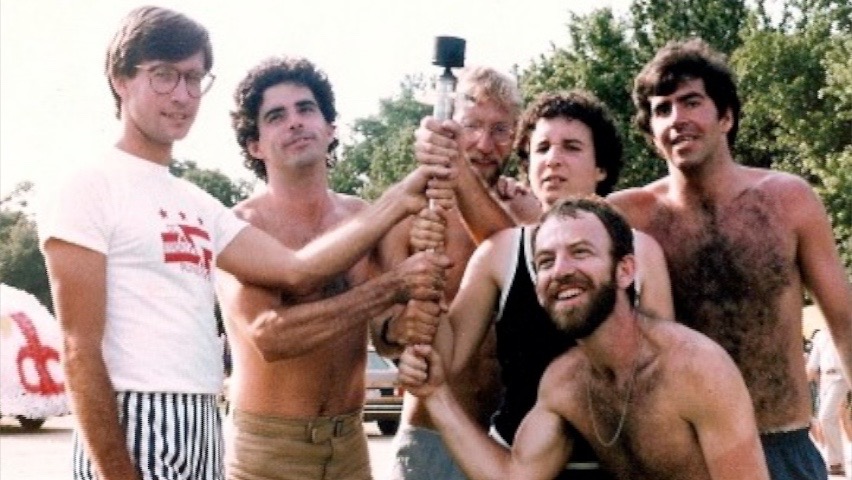
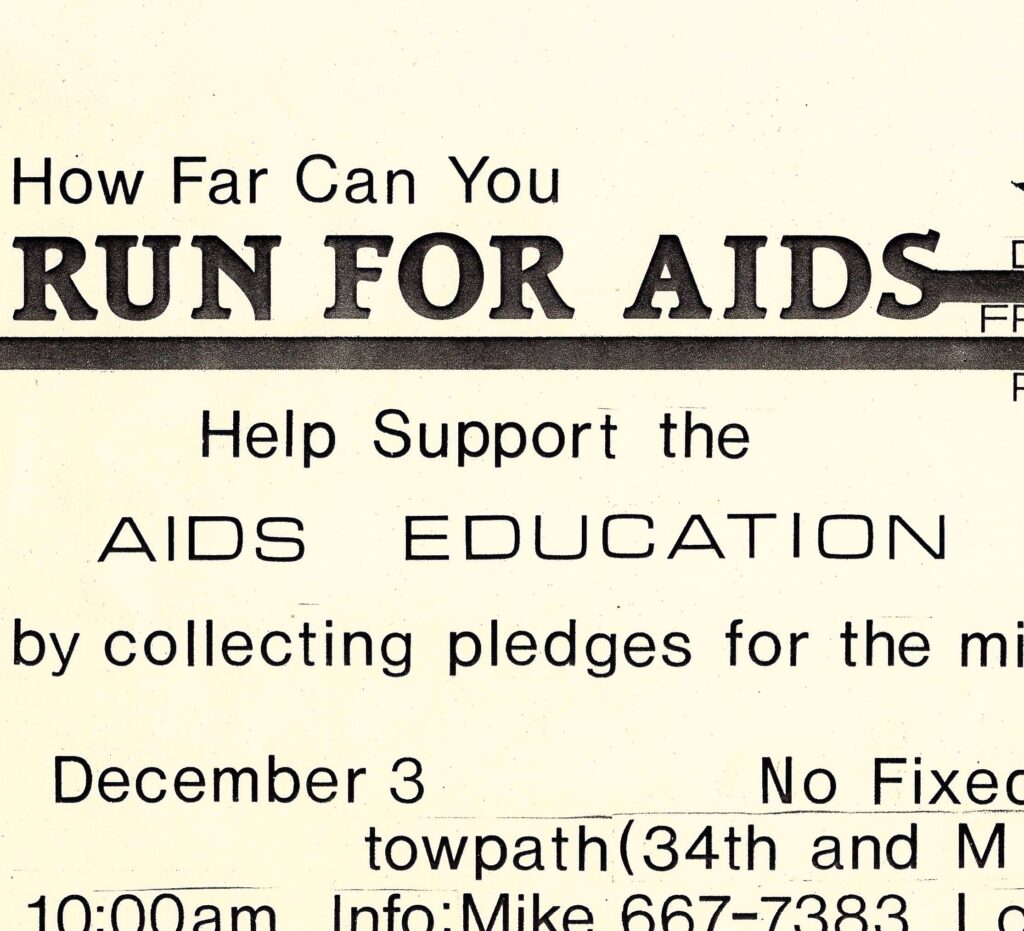
DCFR30th-33
The train of rainbow-colored runner silhouettes that we use on our DCFR Pride Run 5K t-shirts and promotional materials was designed by Seth Kalish, coordinator from 2007-09. It was in 2013 that the club chose Historic Congressional Cemetery in southeast DC as the host venue for the DCFR Pride Run. The event attracts more than a thousand participants each year and has raised tens of thousands of dollars for local gay-oriented charities.
The Pride Run’s forerunners in the 1980s and 1990s were closely-tied to efforts to help those suffering with AIDS, a fatal disease that then posed an existential threat to the gay community. Tony Anderson, coordinator from 1990-92, notes that Pride or Pledge runs were already a well-established feature of the club when he joined in 1987. Rummaging through club archives, I came across a flyer for a 1983 Gay Pride Run with a ‘Suggested Donation $3 for AIDS Education Fund.’
Toward the tail-end of the AIDS crisis, the club’s race circuit was conceived, with Tim Stockert, Lennie Carter, and Charlie Divan its midwives. Says Tim: “The circuit got to DC via my husband, Nick Garramone, DCFR coordinator in 1998. Nick borrowed the concept and model from Philadelphia Frontrunners, from where he had moved. He saw it as a great way to create friendly competition and to encourage members to run.” The circuit rules and awards have been elaborated over the years and participation has grown too: 14 completed it in its inaugural year, while close to 50 do so nowadays.
As we head toward our fifth decade of existence, with membership levels as high as ever and our spectrum of activities continuously expanding, it is hard to predict what future twists and turns we will take. My sense is that we have survived and thrived as a result both of our openness to evolve and our appreciation of what we have gone through. I hope that these will remain guiding principles as we move forward.
